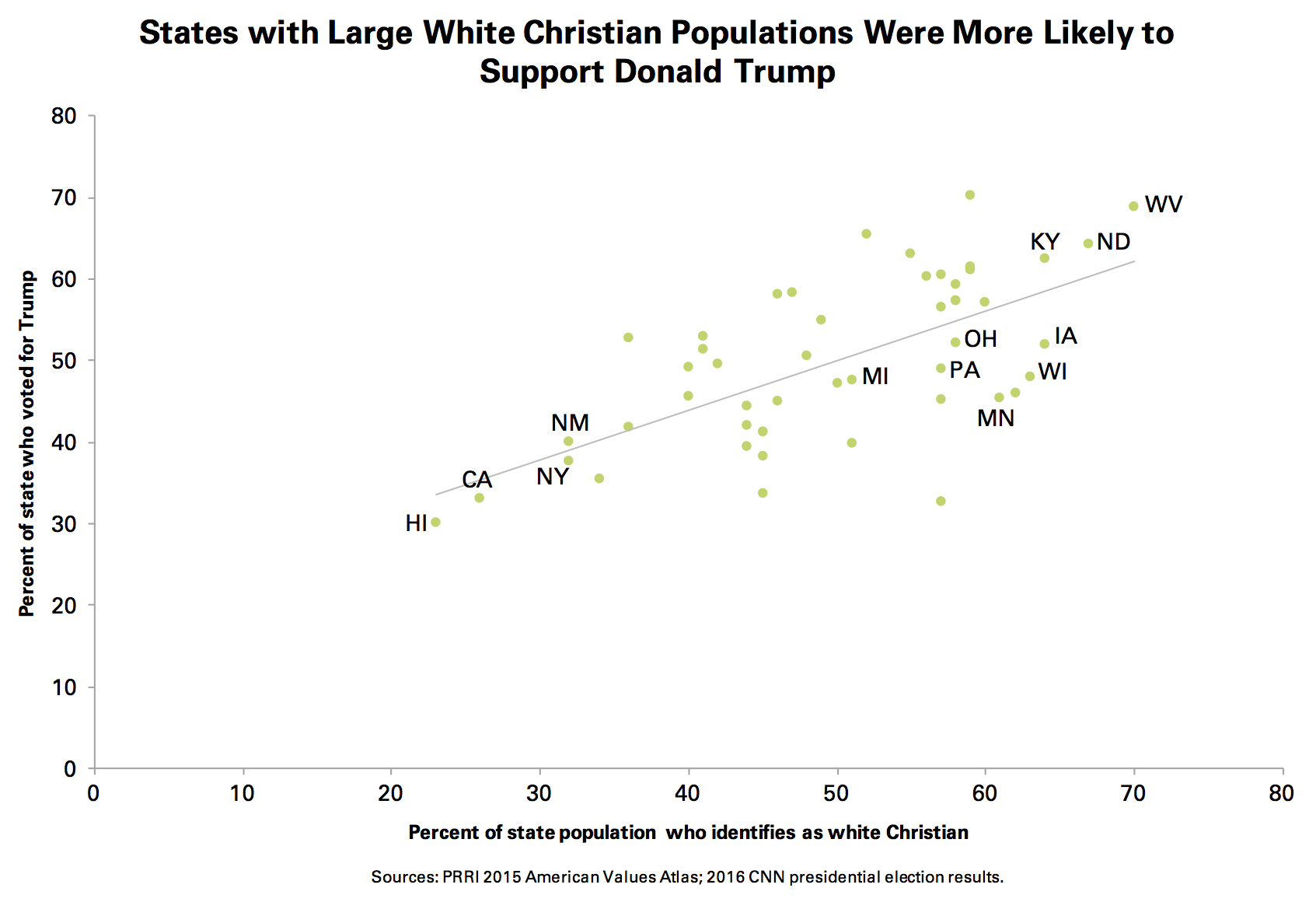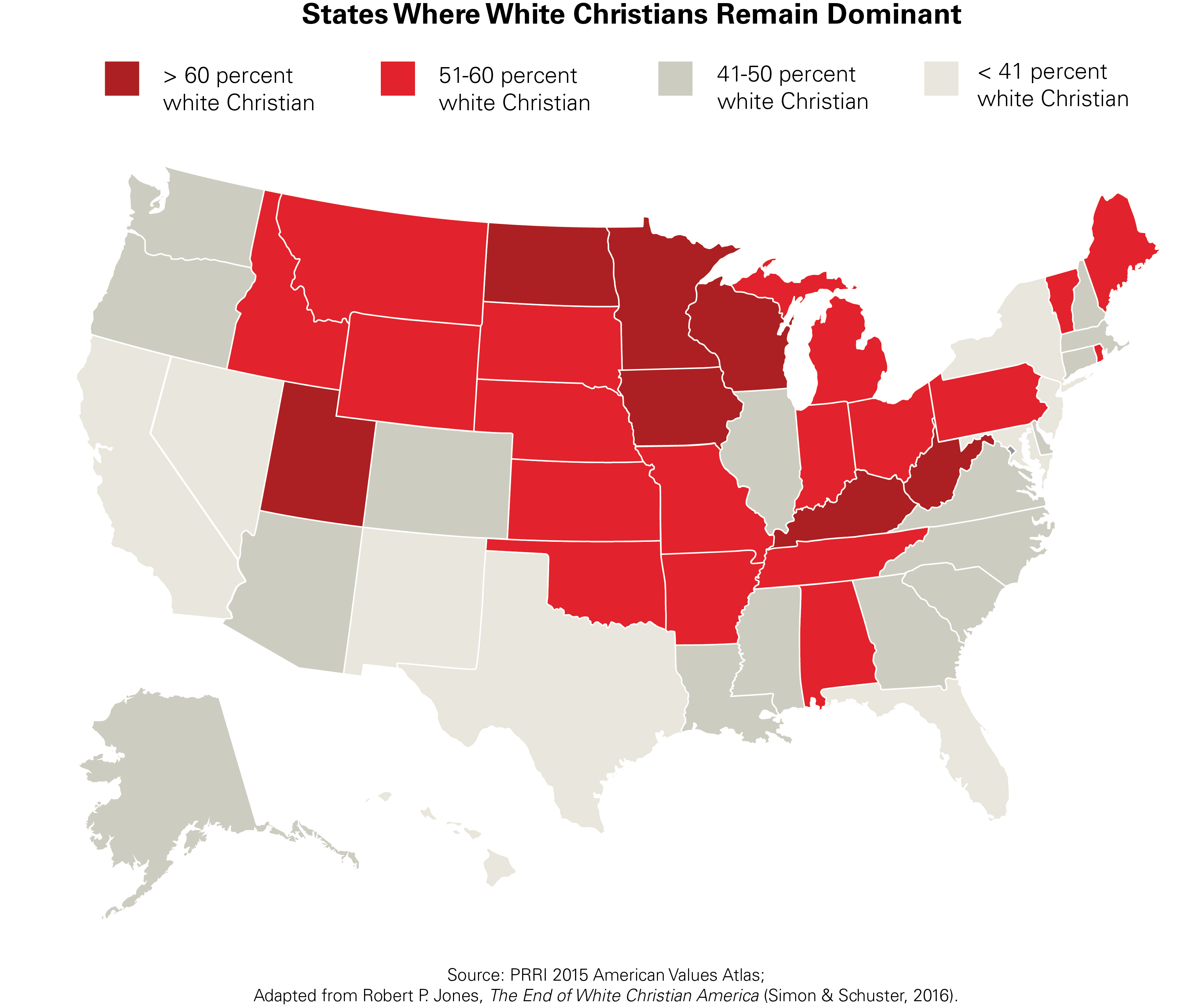White Christian voters were the backbone of Donald Trump’s electoral coalition. More than eight in ten (81 percent) white evangelical Christian voters supported the president-elect, as well as 60 percent of white Catholic voters. Trump even succeeded in attracting the support of the majority (61 percent) of Mormon voters despite their evident concerns about his political policies and character.
Trump fared much better in states with large white Christian populations. The Republican nominee received 69 percent of the vote in West Virginia, a state which is dominated by white Christians—they make up 70 percent of the state’s population. He was also the overwhelming vote-getter in places like North Dakota, Kentucky and Missouri that boast large white Christian populations (67 percent, 64 percent, and 60 percent, respectively).
Four states where Trump performed much better than expected on Election Day all had large concentrations of white Christians, including Iowa (64 percent), Wisconsin (63 percent), Ohio (58 percent), and Pennsylvania (57 percent). Conversely, Trump performed poorly in states like California and Hawaii, where white Christians make up a minority of the state’s population (26 percent and 23 percent, respectively).
One notable outlier is Vermont. A majority (57 percent) of its residents identify as white Christian, but only about one-third (33 percent) of Vermont voters supported Trump. One possible explanation is that despite the strong presence of white Christians in the state, Vermont is among the least religious states in the country, second only to New Hampshire.
This analysis highlights the power of religious identity and culture in the election. Notably, the proportion of white Christians in each of the 50 states is more strongly correlated with support for Trump than is the proportion of white residents without a college degree in the state.






